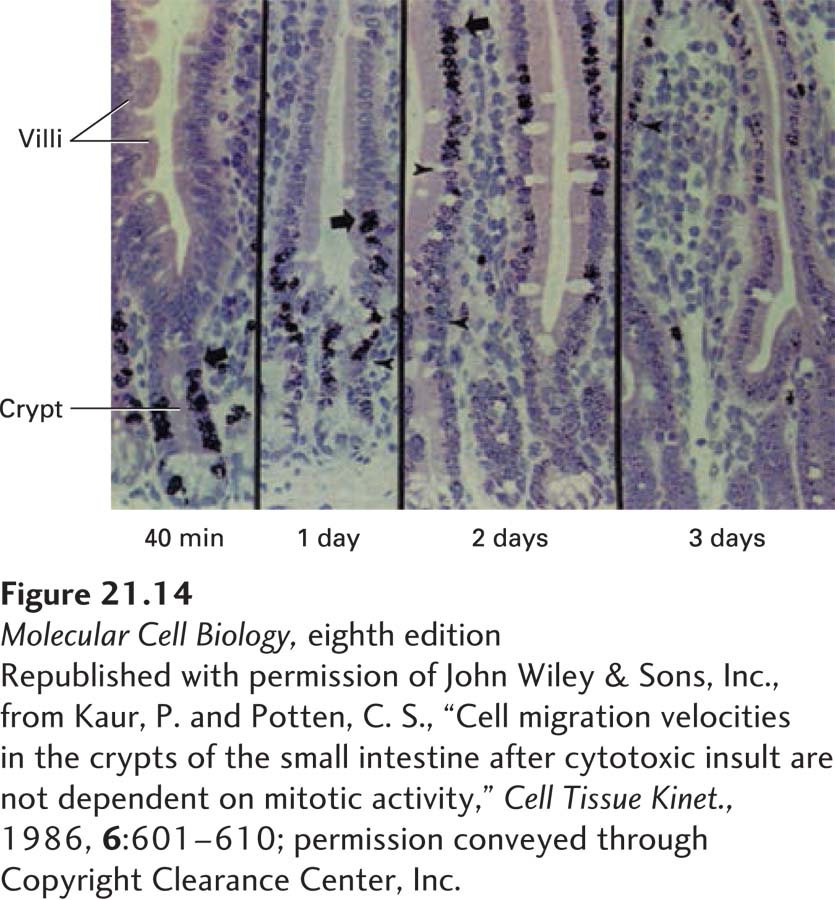
EXPERIMENTAL FIGURE 21- 14 Regeneration of the intestinal epithelium from stem cells can be demonstrated in pulse- chase experiments. Results from a pulse- chase experiment in which radioactively labeled thymidine (the pulse) was added to a culture of intestinal epithelial tissue. Dividing cells incorporated the labeled thymidine into their newly synthesized DNA. The labeled thymidine was washed away and replaced with unlabeled thymidine (the chase) after a brief period; cells that divided after the chase did not become labeled. These micrographs show that 40 minutes after labeling, all of the label is in cells near the base of the crypt. At later times, the labeled cells are seen progressively farther away from their point of birth in the crypt. Cells at the top are shed. This process ensures constant replenishment of the gut epithelium with new cells.
[Republished with permission of John Wiley & Sons, Inc., from Kaur, P. and Potten, C. S., “Cell migration velocities in the crypts of the small intestine after cytotoxic insult are not dependent on mitotic activity,” Cell Tissue Kinet., 1986, 6:601– 610; permission conveyed through Copyright Clearance Center, Inc.]
[Leave] [Close]